
by Ria Olivier | Jul 27, 2022 | Antarctica, Current Event, Engineering, Research, SA Agulhas II, SANAP, Science, Southern Ocean, STEM
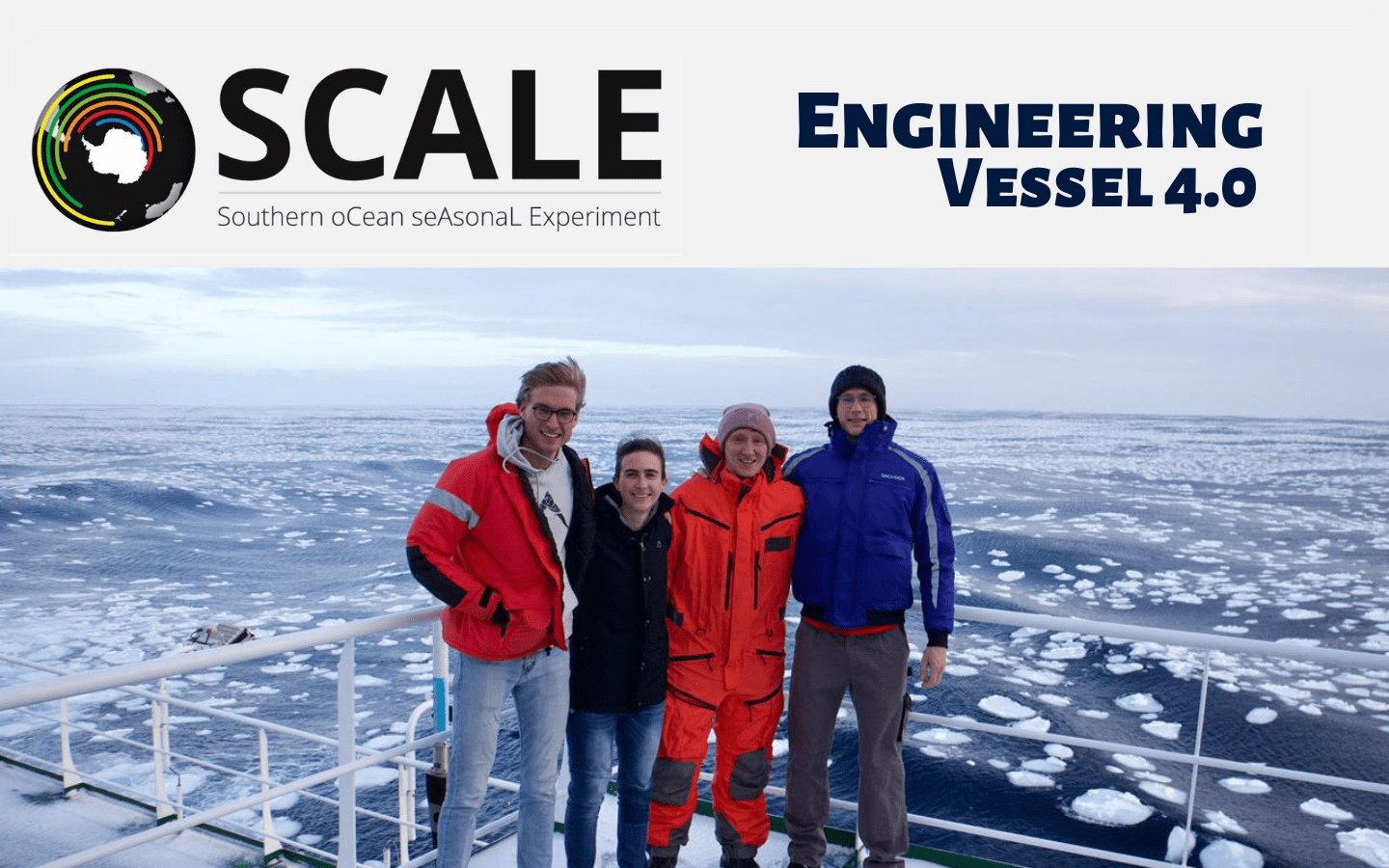
Vessel 4.0 team photo in marginal ice zone. In the photo (left to right): Christof van Zijl, Nicole Taylor, Marek Muchow and Markus Gilges.
| TEAM | VESSEL 4.0 |
| Project name | The Digital SA Agulhas II – Flagship for Vessel 4.0 |
| Principal Investigator | Annie Bekker | Stellenbosch University |
Onboard team members:
| Team Member | Role | Affiliation |
| Nicole Taylor | PhD
Onboard Team Leader | Stellenbosch University |
| Marek Muchow | PhD | Aalto University (Finland) |
| Christof van Zijl | PhD | Stellenbosch University |
| Markus Gilges | PhD | RWTH Aachen University (Germany) |
More about the team and the project:
Nicole and Christof of the Sound and Vibration Research Group of Stellenbosch University, in collaboration with Markus of the HealthProp consortium and Marek of Aalto University, comprise the Vessel 4.0 team. The aim of Team Vessel 4.0 is to investigate the responses of the S.A. Agulhas II as she travels through open water and sea ice during SCALE Winter Cruise 2022.
The S.A. Agulhas II is instrumented with a multitude of sensors, like accelerometers and strain gauges. These sensors function like an internal nervous system, enabling the Vessel 4.0 team to “sense” each vibration and motion of the ship as she breaks through waves and sea ice. So far, the S.A. Agulhas II has had to endure repeated “belly-flops” as she slams into incoming waves (see image below), as well as noteworthy rolling and pitching motions as she climbs and descends large swells on her journey through the Southern Ocean.

The S.A. Agulhas II in a bow slam while in the marginal ice zone (MIZ). Photo Credit: Nicole Taylor.
The team is particularly interested in studying the loads that the ice and waves cause to the hull and propulsion system of the ship. They perform engineering analyses of measurements from the hull and propulsion system to understand how intensively the Southern Ocean and its sea ice require the S.A. Agulhas II to work while navigating through winter conditions. In the image below (left), Markus is shown monitoring his measurement system located in the shaft line.
Additionally, the team is performing visual observations of the sea and ice state around the S.A. Agulhas II throughout the time of the cruise. It helps to record details about the environment that the ship encounters so that the team members have a clearer picture of what the installed nervous system is sensing. Team members spend hours being the “eyes” of the nervous system, writing down metrics like what the wave height and the direction of the main wave train is when in open water, or, when in ice, how thick the ice is and what type of ice the ship is breaking through. Christof is shown seated in the bridge while recording the sea ice conditions in the image above (right). The ice observations are done 24/7 while they are in the marginal ice zone with spotlights on during the night.
The team also uses other instruments, like cameras and lasers, to take measurements and snapshots of the ship’s environment. These really help when working through the measurements and visual observations back in the office after the cruise to understand what happened on board. In the image below Marek, Nicole and Christof are shown in the process of installing an ice thickness measurement system at the bow of the ship.

Ice thickness measurement system installation. In the photo (l-r): Nicole Taylor, Marek Muchow and Christof van Zijl. Photo credit: Kurt Martin.
Along with carefully studying the ship and the environment she interacts with, the team has recruited passengers to participate in their human response research to better understand how people experience living and working on board. During Winter Cruise, the team has distributed custom-developed human-centric software in conjunction with more traditional questionnaires. Through the Mariner 4.0 mobile application and daily diary booklets, participants are equipped to record their daily perception of vibration, noise and motion that may cause them discomfort or illness. The Mariner 4.0 application enables real-time data capturing and analysis on board that has a greater aim to support monitoring and managing of human activities. For example, this could be used to assist with planning research on board and navigation decisions to maximize the time during which researchers are estimated to be the least motion sick and able to work well.
 Read more about the research that Team Vessel 4.0 team members are part of:
Read more about the research that Team Vessel 4.0 team members are part of:
Text supplied by Team Vessel 4.0
Featured images supplied by Kurt Martin (SAPRI trainee)
Anche Louw, Antarctic Legacy of South Africa, 27 July 2022

by Ria Olivier | Jul 27, 2022 | Antarctica, Current Event, Oceanography, Research, SA Agulhas II, SANAP, Science, Southern Ocean, STEM

N-Cycle team onboard the S.A. Agulhas II. Back (left to right) Letizia Tedesco, Christina Monteiro, Brishan Kalyan, Nkateko Maholobela, Mhlangabezi Mdutyana, Aldean Esau; (front) Lumi Haraguchi, Sizwekazi Yapi, Sadiyah Rawat, Amelia Deary, Venecia van Balla.
| TEAM | N-CYCLE |
| Project name | Nitrogen cycle in the Southern Ocean |
| Principal Investigator 1 | Sarah Fawcett | University of Cape Town (UCT) |
| Principal Investigator 2 | David Walker | Cape Peninsula University of Technology (CPUT) |
Onboard N-CYCLE team members:
| Team Member | Role | Affiliation |
| Mhlangabezi Mdutyana | Team Leader | UCT
|
| Amelia Deary | MSc | UCT
|
| Sizwekazi Yapi | MSc | UCT
|
| Christina Monteiro | Honours | UCT
|
| Sadiyah Rawat | Honours | UCT
|
| Lumi Haraguchi | Postdoc | SYKE, Finland
|
| Aldean Esau | Honours | CPUT |
| Venecia van Balla | Honours | CPUT |
| Nkateko Maholobela | Honours | CPUT |
| Brishan Kalyan | MSc | NMU
|
| Letizia Tedesco | Researcher | SYKE, Finland |
The project description as per the sailing orders for the SCALE Winter Cruise of 2022:
Thirty years ago, John Martin proposed that the high nitrate concentrations left unconsumed in Southern Ocean (SO) surface waters result from iron-limitation of phytoplankton growth. Extensive culture and (CPUT) fieldwork has since confirmed the central role of iron in photosynthesis and nitrate assimilation. Because of the implications for CO2, most studies of coupled iron and nitrogen (N) cycling have focused on nitrate assimilation, with little attention paid to the role of iron in mixed-layer N (re-)cycling. Our preliminary data suggest that iron availability exerts a strong control on N regeneration; if verified, this has implications for our mechanistic understanding of the N cycle, now and in the future when the iron supply to the surface SO is predicted to rise.
On this cruise, we plan to interrogate the role of iron in the upper SO N cycle at high resolution through extensive iron amendment experiments. We will also examine the composition and functioning of the associated planktonic (auto-, mixo- and heterotrophic) community. Diverse aspects of Southern Ocean physics and chemistry are already experiencing climate-induced changes; a major motivation for this work is to develop expectations for Southern Ocean fertility and ecology in response to such changes. This work is also relevant for the nutrient supply to the low-latitude ocean, which is controlled by both the extent of nutrient uptake in Southern Ocean surface waters and the ratios in which these nutrients are consumed; the latter is strongly affected by iron availability and plankton species composition.
Cape Peninsula University of Technology students, under the supervision of Dr David Walker, will be investigating chlorophyll-a concentrations and phytoplankton assemblages at all the CTD and process stations, as well as in ice core samples.
Follow Dr Fawcett on Twitter and check out the Marine Biogeochemistry Lab website (links below).


Text and images supplied by the N-Cycle team and Kurt Martin (SAPRI Trainee)
Anche Louw, Antarctic Legacy of South Africa, 27 July 2022.

by Ria Olivier | Jul 26, 2022 | Antarctica, Current Event, Research, SA Agulhas II, SA Polar Research Infrastructure, SAPolarRI, Science, Southern Ocean, STEM

Top Predator team for seabirds and marine mammal observations during SCALE cruise 2022: (left to right) Matthew Germishuizen, Makhudu Masotla, Mpumalanga Mnyekemfu, and Estefan Pieterse.
| TEAM | TOP Predators |
| Project name | Top predator assemblages, distribution and abundance in the Southern Ocean |
| Principal Investigator | Azwianewi Makhado | Department of Forestry, Fisheries and the Environment (DFFE), Branch: Oceans and Coasts |
Onboard Top Predators team members:
| Team Member | Role | Affiliation |
| Makhudu Masotla | Team Leader
Research fellow
eDNA, Plastic pollution, At sea observer
| Department of Forestry, Fisheries and the Environment |
| Mpumalanga Mnyekemfu | Seabirds At sea Observer | Department of Forestry, Fisheries and the Environment |
| Matthew Germishuizen | Mammals At sea observer | Mammal Research Institute, University of Pretoria |
| Estefan Pieterse | Mammals At sea observer | Mammal Research Institute, University of Pretoria |
More about the project:
Seabirds and marine mammals are often the early indicators of changes in an ecosystem and display the effects of climate change vividly. Their distribution can be grouped into assemblages; which are species occurring in space and time. Ocean currents, physical and chemical forces generate nutrients necessary for primary productivity that accumulates biomass. These create hot spots of ecologically important zones for seabirds, marine mammals and several other marine taxa. There is a direct linkage of these structures to seabed topography, physical water properties and some oceanographic processes, such as fronts, eddies and local upwellings. Prey availability is mostly influenced by these features, therefore it is expected for top predators, such as seabirds to be found in these areas.
The overarching purpose of this expedition was to collect distribution and abundance data on seabirds, and marine mammals. We envisage several conservation applications using data that this project should generate, such as to define ‘ocean hotspots’, where visible marine life (such as seabirds or cetaceans) congregate in relative abundance and with some degree of consistency. Further objectives are to identify important areas for highly threatened species such as albatross and petrels. These areas might become marine Important Bird Areas or contribute to the designation of Marine Protected Areas, special nature reserves on the high seas, and no-take zones to protect sensitive species from commercial fishing. The additional aim is to determine the distribution and abundance of seabirds and marine mammals in the southern ocean in relation to a number of different environmental variables (e.g. surface temperature, chlorophyll, fronts, etc.) in order to address the knowledge gap around their at-sea movements in our study area.
Acoustic data
Antarctic krill Euphausia superba is a keystone species in the Antarctic ecosystem as it is prey to various top predators i.e. seabirds, whales, seals, and fish. To establish predator-prey relationships between marine mammals/seabirds and krill, acoustic data will be collected from three transducers (i.e. 38, 120 and 200 kHz) mounted on the drop keel of the SA Agulhas II. The data collection will not interfere with any other scientific operations and will be autonomously logged. Information produced by this study will give relative abundance and distribution of krill relative to the visually observed seabirds and marine mammals. This information will also be crucial for the management and conservation of different endangered marine animals.
Environmental DNA (eDNA) detection represents a powerful tool for assessing aquatic biodiversity and for the efficient detection of “hard-to-find species,” including top predators. Detection of a species-specific eDNA sequence implies the presence of this species in a certain area. Knowledge of prey items established using metabarcoding within the scats, guano, pellets, stomachs and regurgitates of mid-level and high-level components of the food web may highlight spatial differences in diet, behavior, or environmental pressure. Metabarcoding has the potential to assess the presence of hundreds of species in both the environment and the diet of predators. The top predators team will therefore be collecting eDNA samples towards the fulfillment of the metabarcoding objective.
Text and images: AB Makhado, M Seakamela, M Germishuizen, M Mnyekemfu, E Pieterse and MM Masotla.
Anche Louw, Antarctic Legacy of South Africa, 26 July 2022.

by Ria Olivier | Jul 26, 2022 | Antarctica, Current Event, Engineering, Research, SA Agulhas II, SANAP

L-R: Paul Senda (onboard team member). Data recorded with the sensor in Room 7320 are being interpreted with mathematical modeling.
| TEAM | VESSEL-WAVE |
| Project name | Reconstruction of sea surface elevation from moving vessel |
| Principal Investigator | Butteur Ntamba Ntamba | Cape Peninsula University of Technology (CPUT) |
| Onboard team member/team leader | Paul Senda | CPUT |
More about the project:
Four IMU (Inertia Measurement Unit) sensors are installed on the S.A. Agulhas II – two sensors are near the center of gravity of the ship, one on the monkey deck and one on deck 7 (Room 7320 – for quick verification of the code). The sensor is a small, self-contained strap-on system and records the time series of roll, pitch and heave.
We know the ship’s response to waves, as described by Response Amplitude Operators (RAO). These must be computed numerically from the shape of the ship’s hull (the hull of the SAAII, which I obtained while she was on dry dock in 2019. We did a 3D scan of the vessel with Prof Bekker). We have developed software which relates the observed time series with the RAOs to the statistical characteristics of the sea state. Once it works, we can use a ship as a sensor for the sea state in which it travels.
Data recorded using the IMU are used to verify the algorithm or mathematical model and existing software predicting or giving the input to the ship’s motion on the sea which is waves. The understanding of sea waves will allow people or vessels for better seakeeping, seakeeping behavior and identify parts of the ship that affect good seakeeping.
Text and images supplied by Paul Senda.
Anche Louw, Antarctic Legacy of South Africa, 26 July 2022.

by Ria Olivier | Jul 26, 2022 | Announcement, Antarctica, SCAR, Science, Southern Ocean, sub-Antarctic
 SCAR Open Science Conference takes place from 27 July and this includes the Business Meetings on 27-29 July 2022, the conference from 1-5 August, and the delegates meeting on 5- 7 September.
SCAR Open Science Conference takes place from 27 July and this includes the Business Meetings on 27-29 July 2022, the conference from 1-5 August, and the delegates meeting on 5- 7 September.
 The SCAR Open Science Conference, established 20 years ago, has in many ways become the premier activity of SCAR that supports its mission to promote and facilitate international Antarctic and Southern Ocean science. These biennial meetings have become fertile ground for the exchange of the latest and highest profile Antarctic research outcomes and a place where future collaborations are born. The biennial SCAR meetings are an opportunity for subsidiary groups to meet and conduct their business. For some groups this provides the time to develop and produce reports for the Delegates Meeting which follows the open science conference.
The SCAR Open Science Conference, established 20 years ago, has in many ways become the premier activity of SCAR that supports its mission to promote and facilitate international Antarctic and Southern Ocean science. These biennial meetings have become fertile ground for the exchange of the latest and highest profile Antarctic research outcomes and a place where future collaborations are born. The biennial SCAR meetings are an opportunity for subsidiary groups to meet and conduct their business. For some groups this provides the time to develop and produce reports for the Delegates Meeting which follows the open science conference.
XXXVII SCAR DELEGATES MEETING takes place from 5- 7 September and the South African delegates are Prof Bettine van Vuuren (Chair of South African National Committee for SCAR) and Tracy Klarenbeek (director: NRF – Knowledge Advancement and Support)
Under SCAR’s Articles of Association, the Meeting of the Delegates may create subsidiary bodies to undertake certain aspects of the business of SCAR. Specified Subsidiary Bodies are:
We wish all successful business meetings and conference participation.
Follow us on Twitter for announcements of presentations and sessions.

Text compiled from the official SCAR2022 website.
Ria Olivier, Antarctic Legacy of South Africa, 26 July 2022
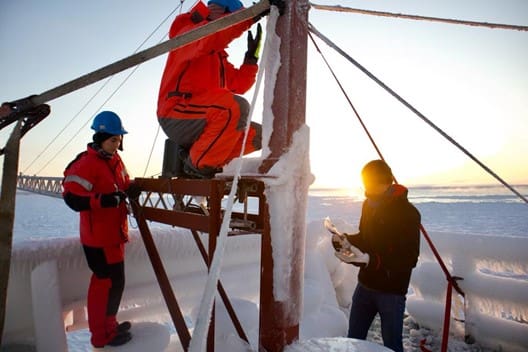

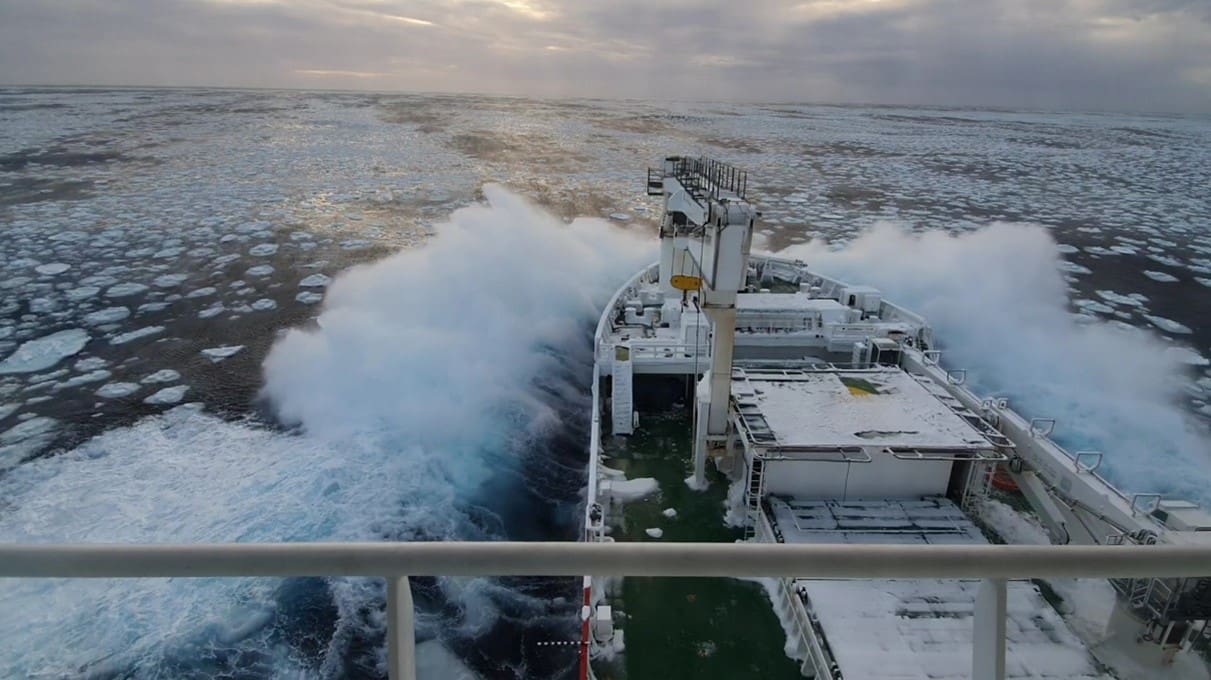

![]() Read more about the research that Team Vessel 4.0 team members are part of:
Read more about the research that Team Vessel 4.0 team members are part of:
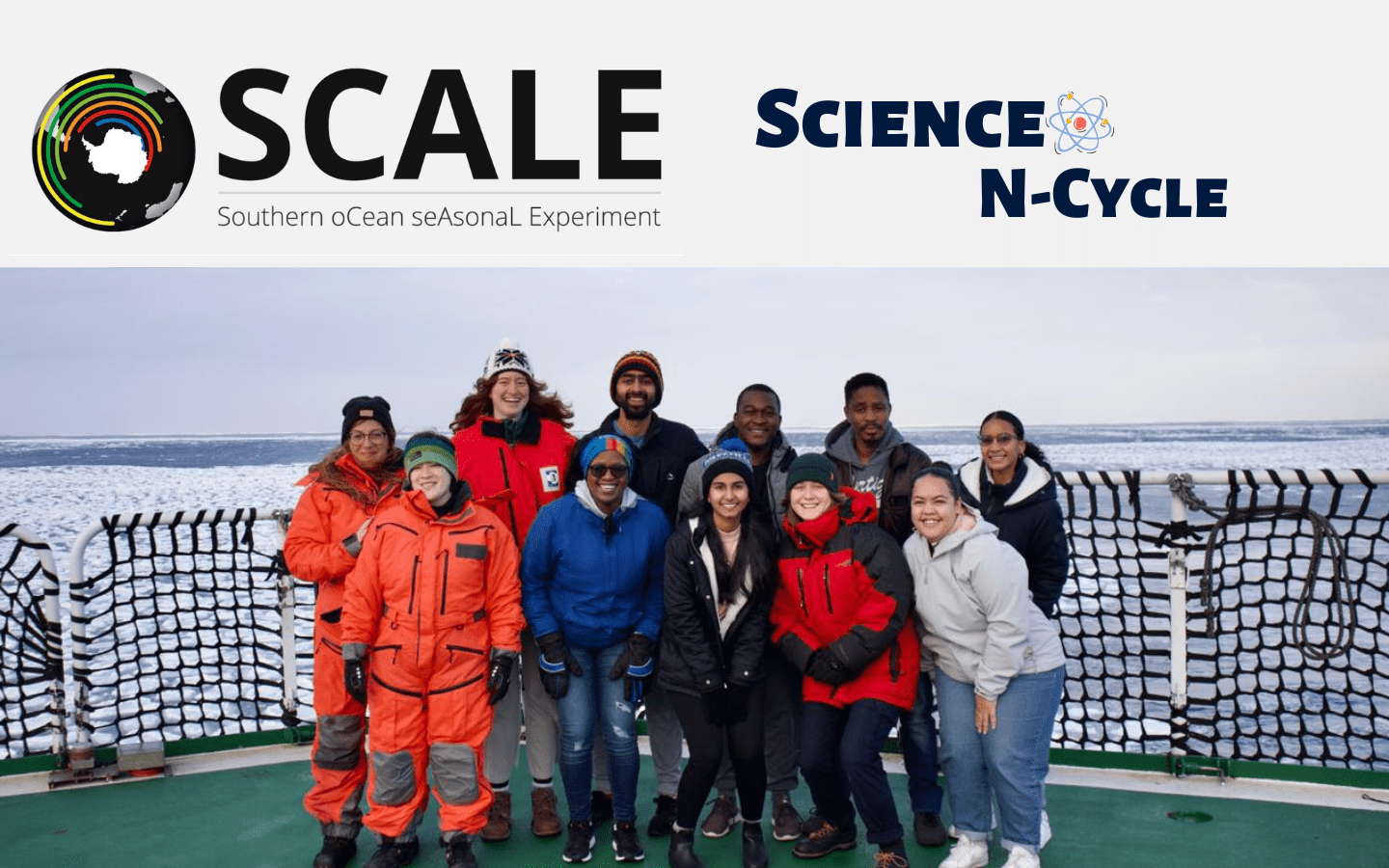

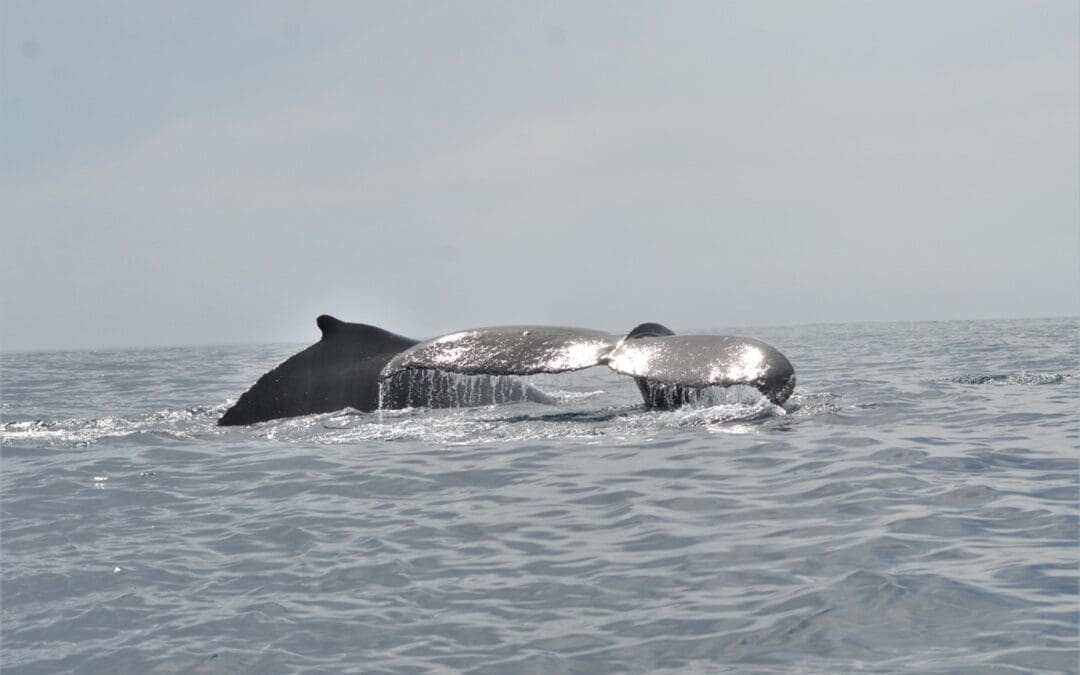
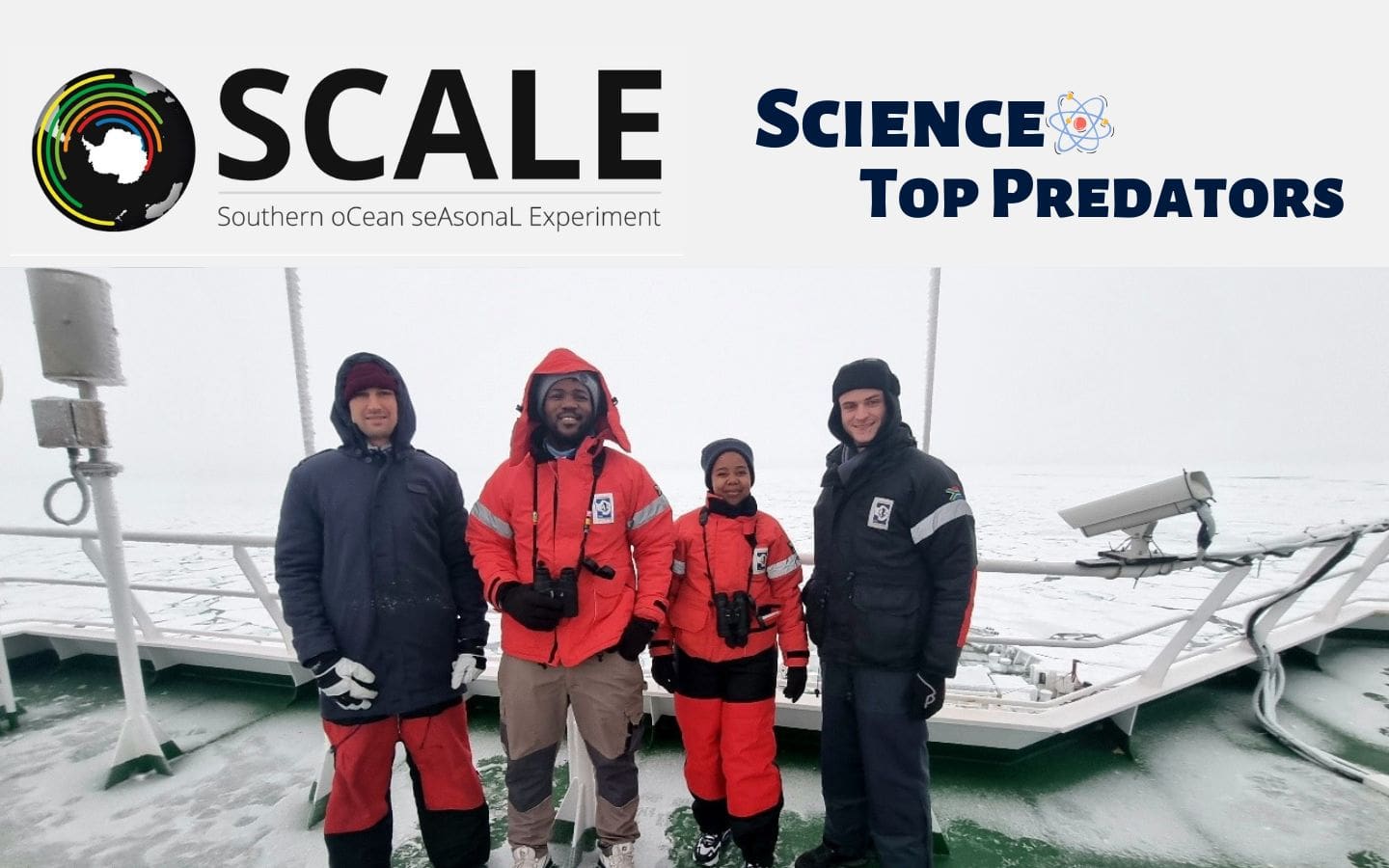
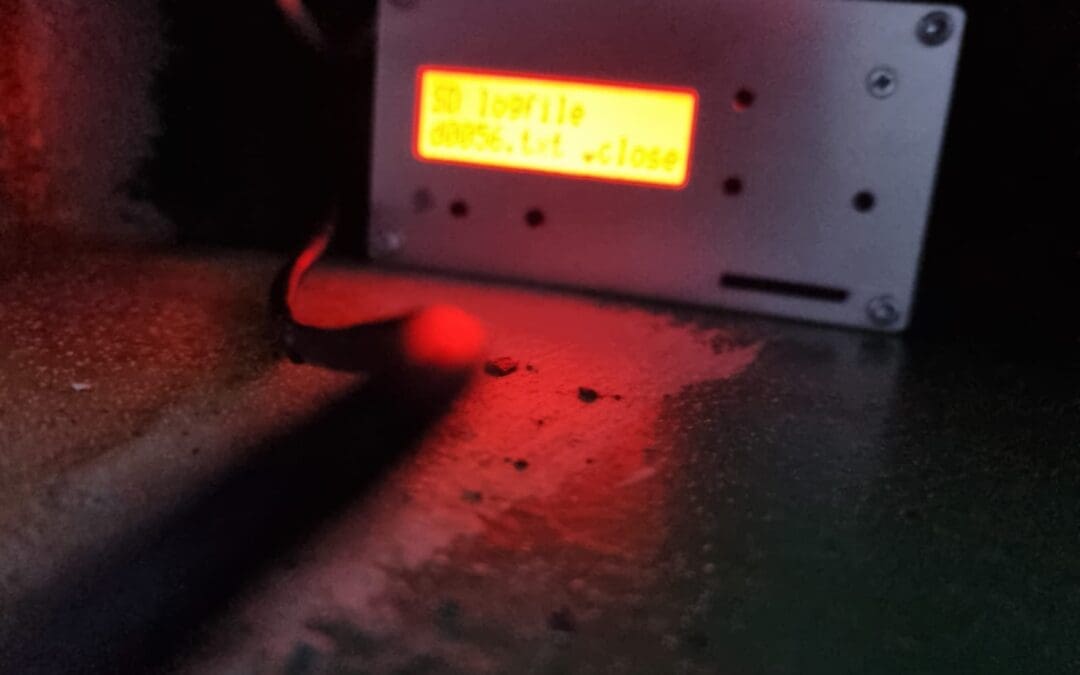
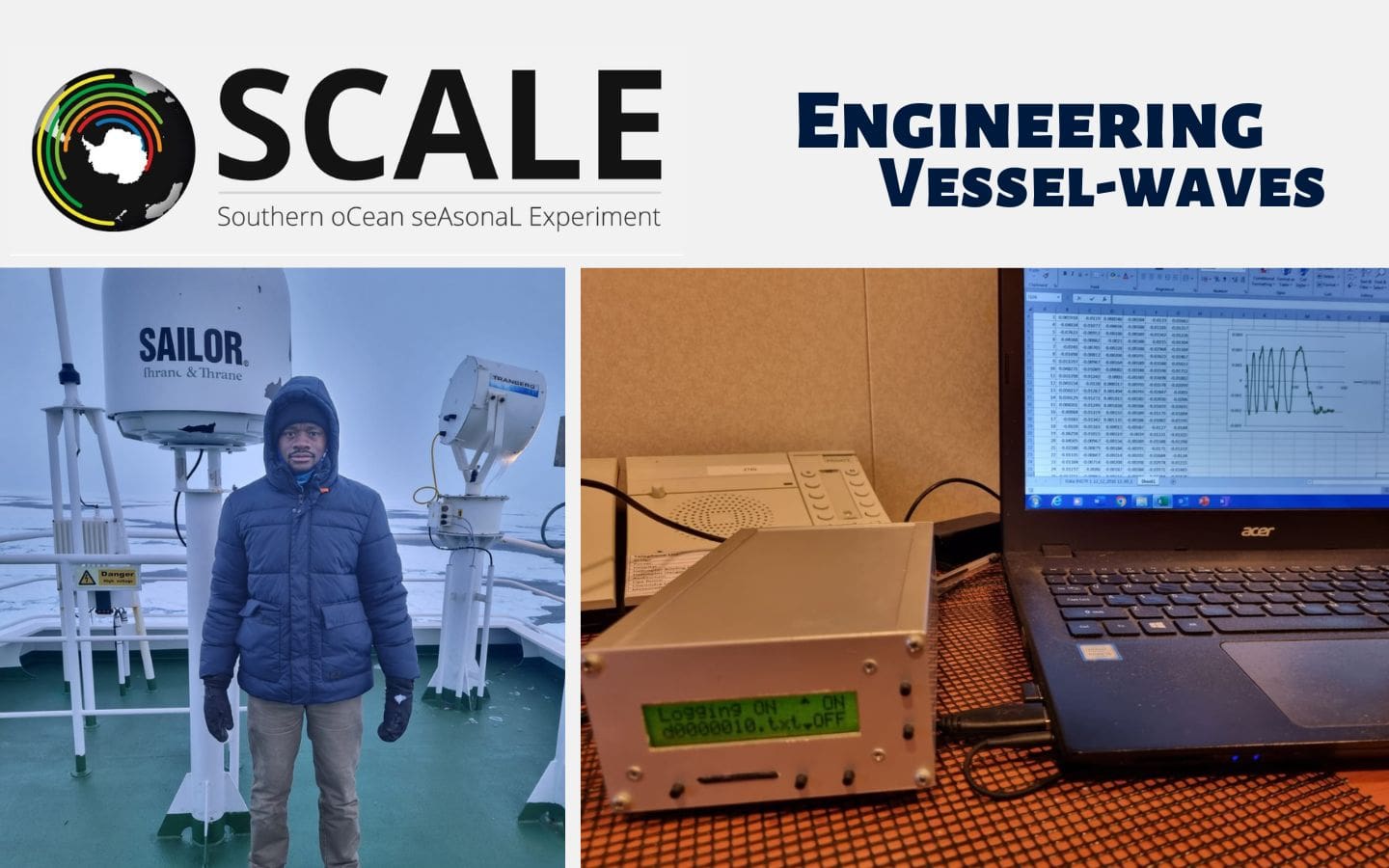

 SCAR Open Science Conference takes place from 27 July and this includes the Business Meetings on 27-29 July 2022, the conference from 1-5 August, and the delegates meeting on 5- 7 September.
SCAR Open Science Conference takes place from 27 July and this includes the Business Meetings on 27-29 July 2022, the conference from 1-5 August, and the delegates meeting on 5- 7 September. The
The 




